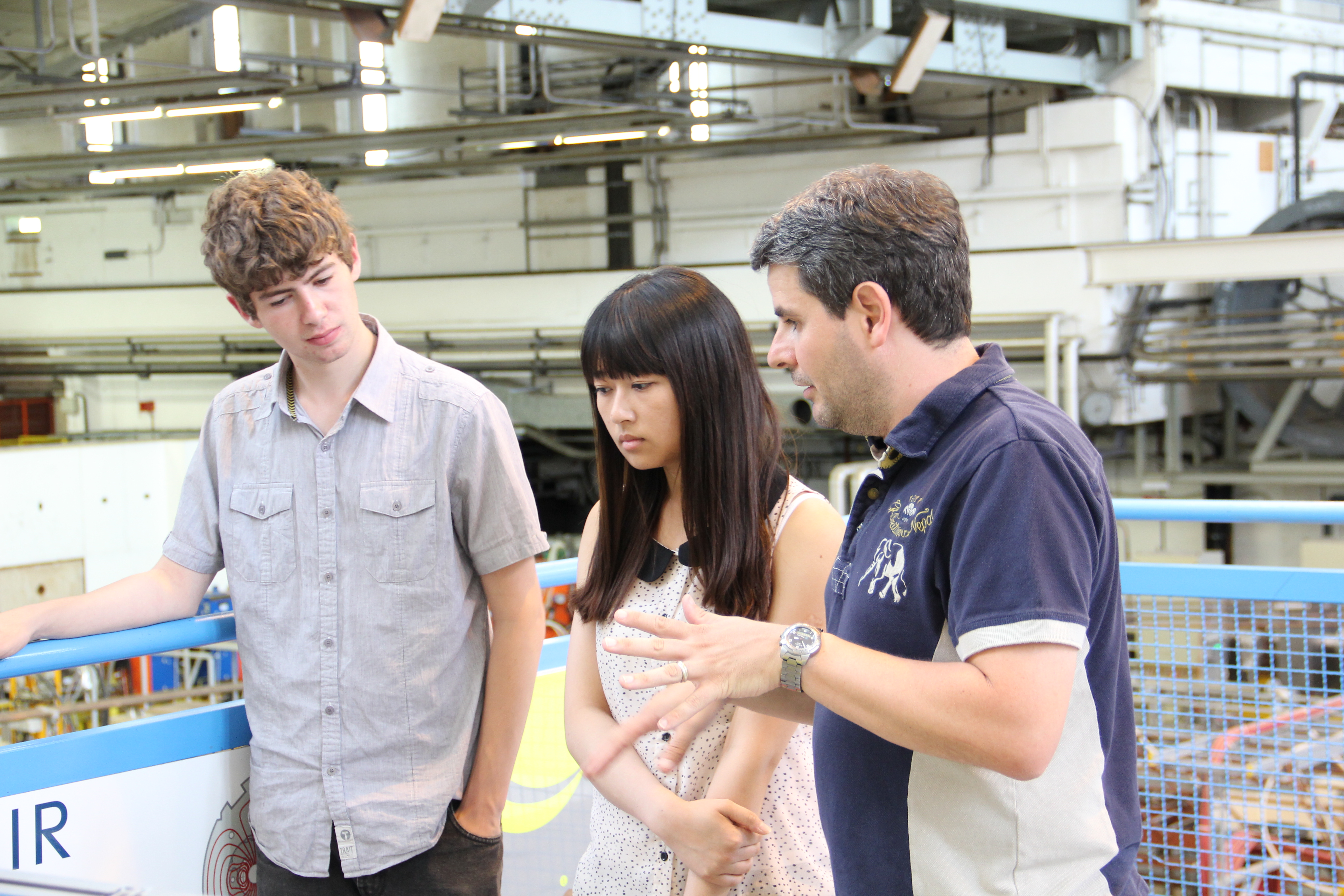
Every year CERN opens its doors to hundreds of high-school students who wish to get an in-depth look at what it is like to be a scientist or engineer at one of the world’s most prestigious research laboratories. Sharing their week-long experience are Millie Zhao (18 years old) and Robert Stein (17 years old), who came to CERN in mid-August to shadow CMS physicist Dave Barney.
You might be wondering how we managed to get work experience at CERN. Basically, we asked very nicely, and they said yes! We sent an email with a CV and covering letter, along with potential dates, to the CERN recruitment service, enquiring about possibilities for high-school students. We were told that work experience was offered, and that they would forward our application to possible supervisors.
I remember very clearly the day that I found out that I had been offered a placement at CERN, because it was the morning of my AS physics exam, and I was busy revising. It was a strange coincidence that Results Day was during our work experience week, so we got our AS results to that exam while at CERN! — Millie
Before we visited CERN, we had lots of expectations about what it would actually be like. We expected towering, futuristic buildings; scientists in white coats working in labs, and everything to look a little bit like Star Trek. The first physicist we met was David Barney, our supervisor for the week and he was nothing like what we expected. He has a great sense of humour, and is very approachable; he makes sure that he explains everything to you, so you never feel lost.
We didn’t really get a good feel of the atmosphere of CERN until we went to lunch, and were able to meet other scientists. The canteen, which seemed more like a Spanish bar, was full of physicists in T-shirts and Bermuda shorts chatting in the Swiss/French sunshine over extended lunch breaks. It was really exciting that you could easily find yourself sitting next to a Nobel Prize winner! The atmosphere is surprisingly relaxed, and everyone is really friendly.
In the afternoon, Dave took us to the CMS detector in France, which is 100 metres underground. Although we couldn’t see the detector itself, it felt amazing to stand just seven metres away from where Higgs bosons were produced and detected! We also got to see the CMS control room for the first time, which was also incredible as we could see the LHC status, and the live event display of the detector working directly below us.
We followed this by attending a weekly CMS “Run Coordination” meeting, where the status and planning of CMS is discussed. We felt really privileged to be able to get this “behind the scenes” glimpse of things.
The next day we got our hands dirty in the lab! After a short introduction by Diogo di Calafiori and Oliver Holme from ETH Zurich, we started to test the new High-Voltage Distribution and Monitoring Board for the CMS Preshower Detector, which is in charge of giving voltage to silicon detector pairs, and recording the current from them. We were testing the system by looking at the behaviour of each connection under different voltages. It felt really satisfying to know that we were doing something that was actually useful to the LHC. The data will be used by the CMS team to improve their detector, and we were in charge of collecting them!
Over our week at CERN, we were lucky enough to meet a huge number of different people from all departments. One highlight was Andre, ECAL Run Coordinator and Higgs analyst, explaining the CMS detector over lunch by using leftover lemon as protons, which he pushed together to collide, and the zucchini on his plate to represent the detector layers. It was hilarious, but surprisingly helpful. We were also lucky enough to meet John Ellis, a theoretical physicist, whose job is to come up with new ideas in physics. It was fascinating to hear him talk over lunch about the ideas he’d just come up with about Supersymmetry!
Our final activity was to visit the LHC Control Centre with Alick Macpherson. He showed us the different areas for controlling the LHC and the other CERN accelerators, as well as something called the “Technical Infrastructure” centre – where all the CERN power, water etc. are monitored and controlled. Again it was really amazing that the people running these things took time out to spend with us and show us around.
As you can probably tell, we had an amazing week, and we would both highly recommend that anyone who is interested in physics should apply. We promise that you will enjoy it!
Submitted by Millie Zhao and Robert Stein
- Log in to post comments

